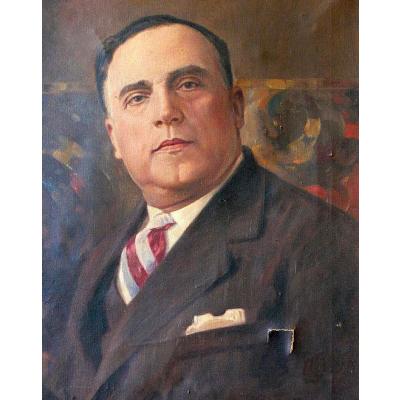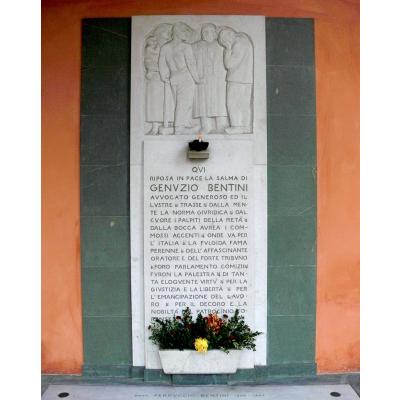Scheda
Genuzio Bentini (27 June 1874 - 15 August 1943), originally from Forli, had a very turbulent and intense political life and he is remembered for his great social commitment and his constant opposition to the fascist dictatorship. Initially he was a propagandist of anarachist ideals in school and in the countryside and he also organised the worker’s demonstration in Borgo Saffi (Ravenna) in May of 1892. For these reasons he was arrested and had to spend time in prison. In the same year he moved with his family to Bologna and started university studies in law, finishing with a controversial thesis on the “Crime of protest”. Once he started his profession as a criminal defense lawyer, his orientation became much more socialist and remained so to the political election of 1904, when he was elected as deputy of the college of Castel Maggiore when he was thirty years old. On 18 December of 1920, in the increasing expansion of the fascist movement, he was, together with his colleague Adelmo Niccolai, violently attacked by a group of fascists, but this did not stop his fervor, on the contrary, he immediately started an inquiry to investigate this attack and other numerous violent attacks on the peasant and worker movements of the province.
He was reelected as deputy in 1921 as part of the Italian Socialist Party (PSI) and in the June of 1925, in Lugano, he commemorated the anniversary of the assination of Giacomo Matteotti, which attracted further dislike and pressure from regime forcing him to cease his political activities but he was allowed to stay in Italy and continue his profession. He also wrote for different publications, including L’Anima di Giovanni Pascoli (The soul of Giovanni Pascoli, 1933) and Consigli ad un giovane avvocato: parole in un orecchio (Tips for a young lawyer - words in the ear, 1935). He died in Lodi on 15 August of 1943, immediately after the fall of Mussolini, therefore his funeral took on a remarkable political antifascist undertone. He, nevertheless, arrived with all of the honors at the Certosa cemetery in Bologna on the 3 November of 1946 and after a couple of years he was moved from his temporary burial place to the definitive tomb in in the courtyard of the Church.
Translation from italian language by Holly Bean.




